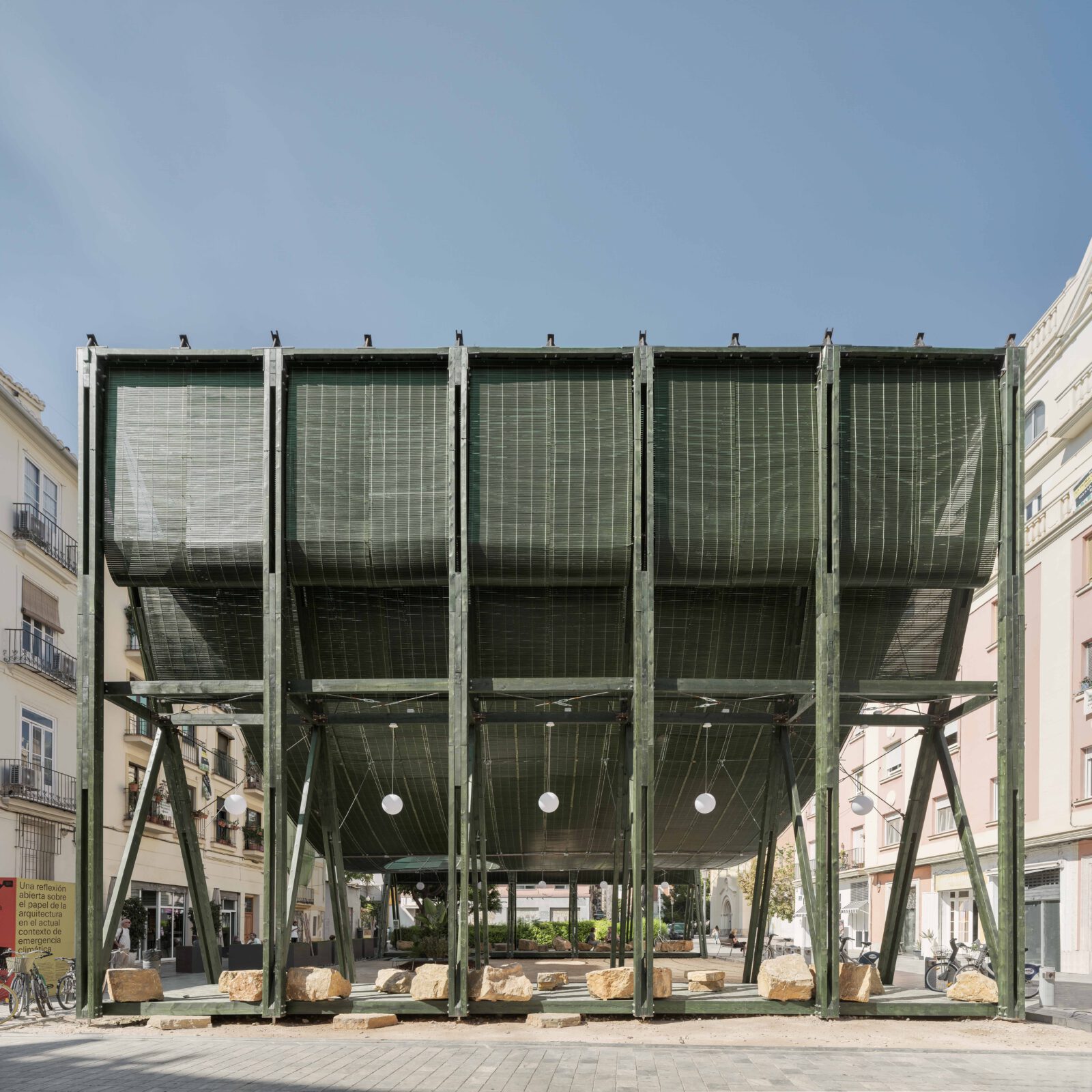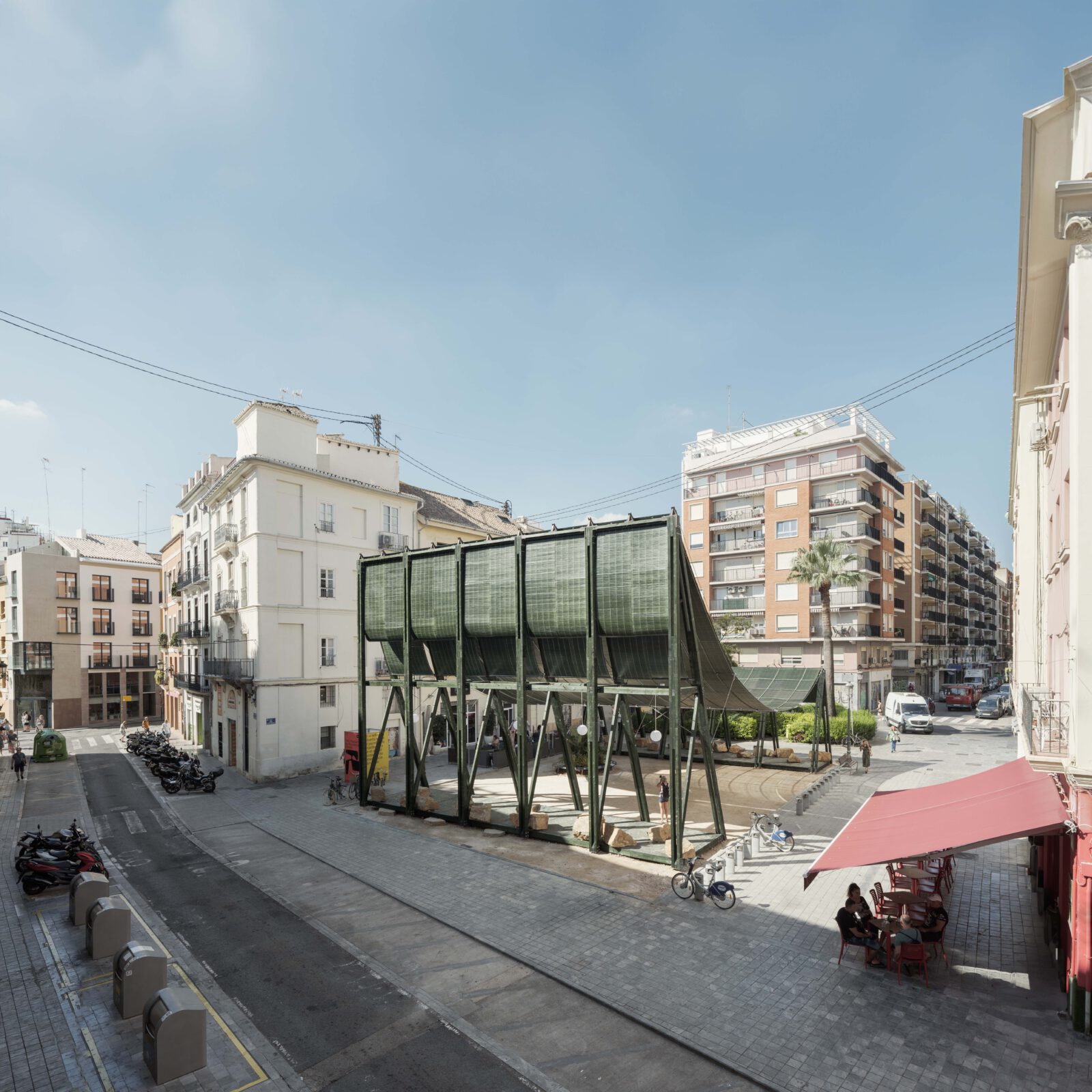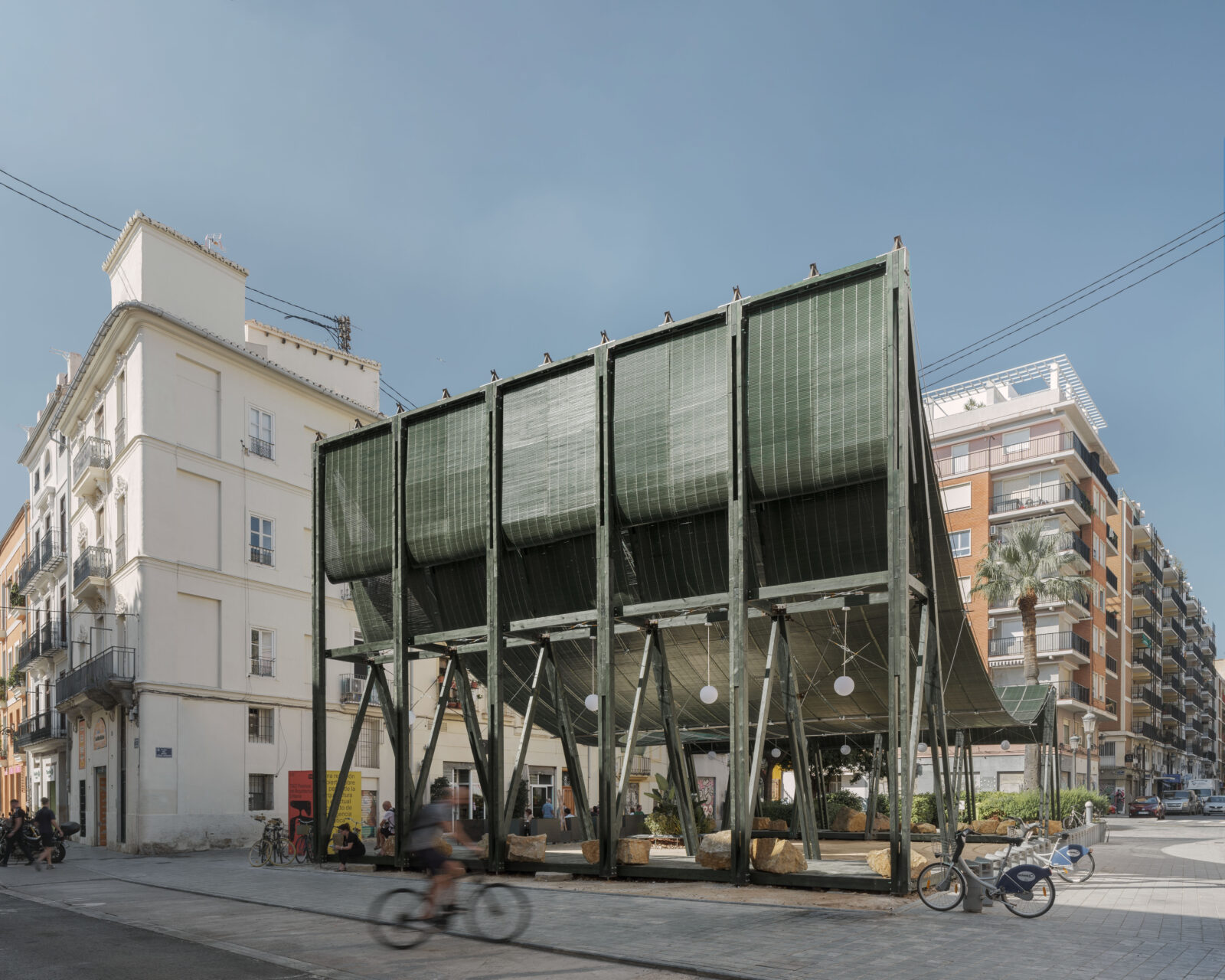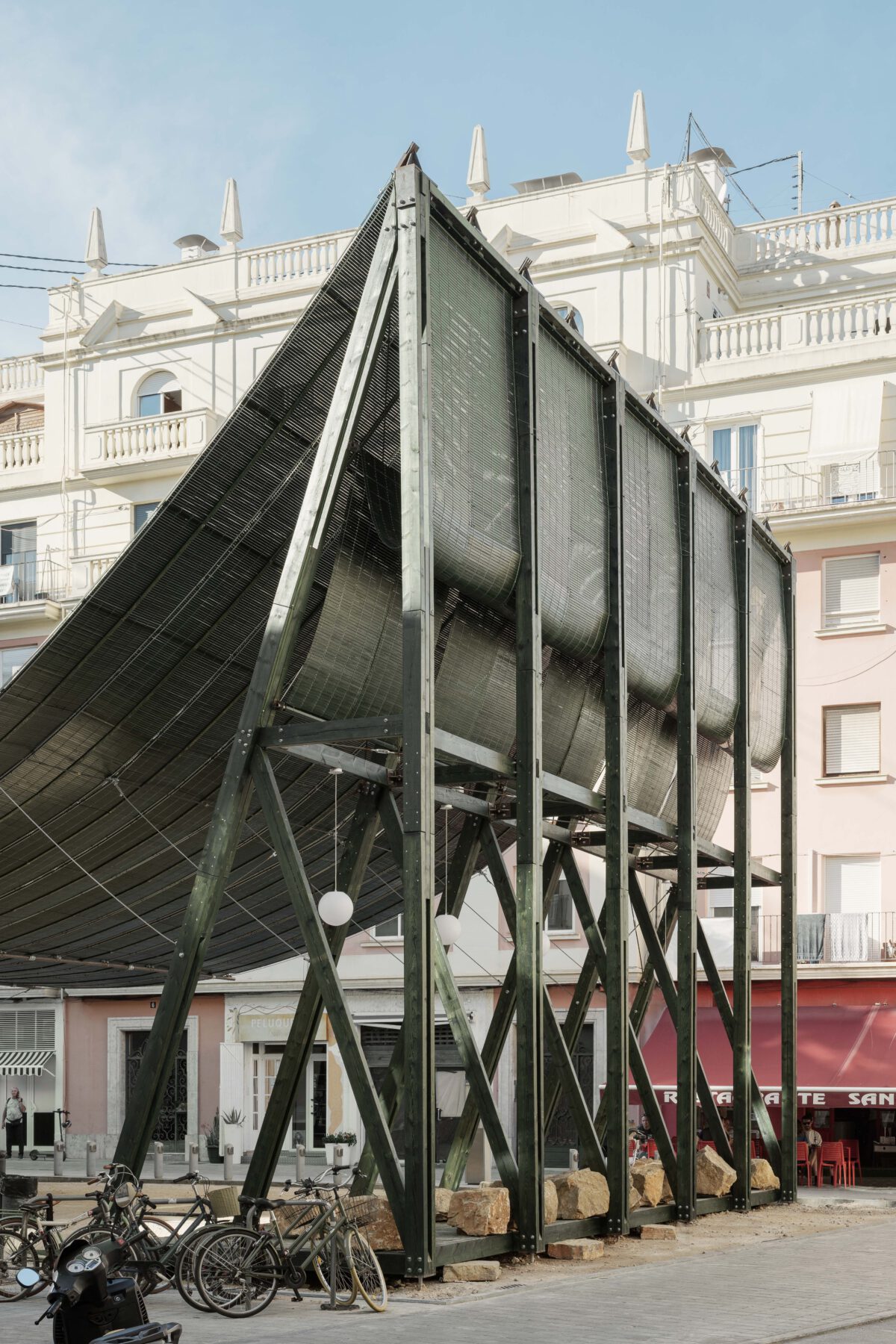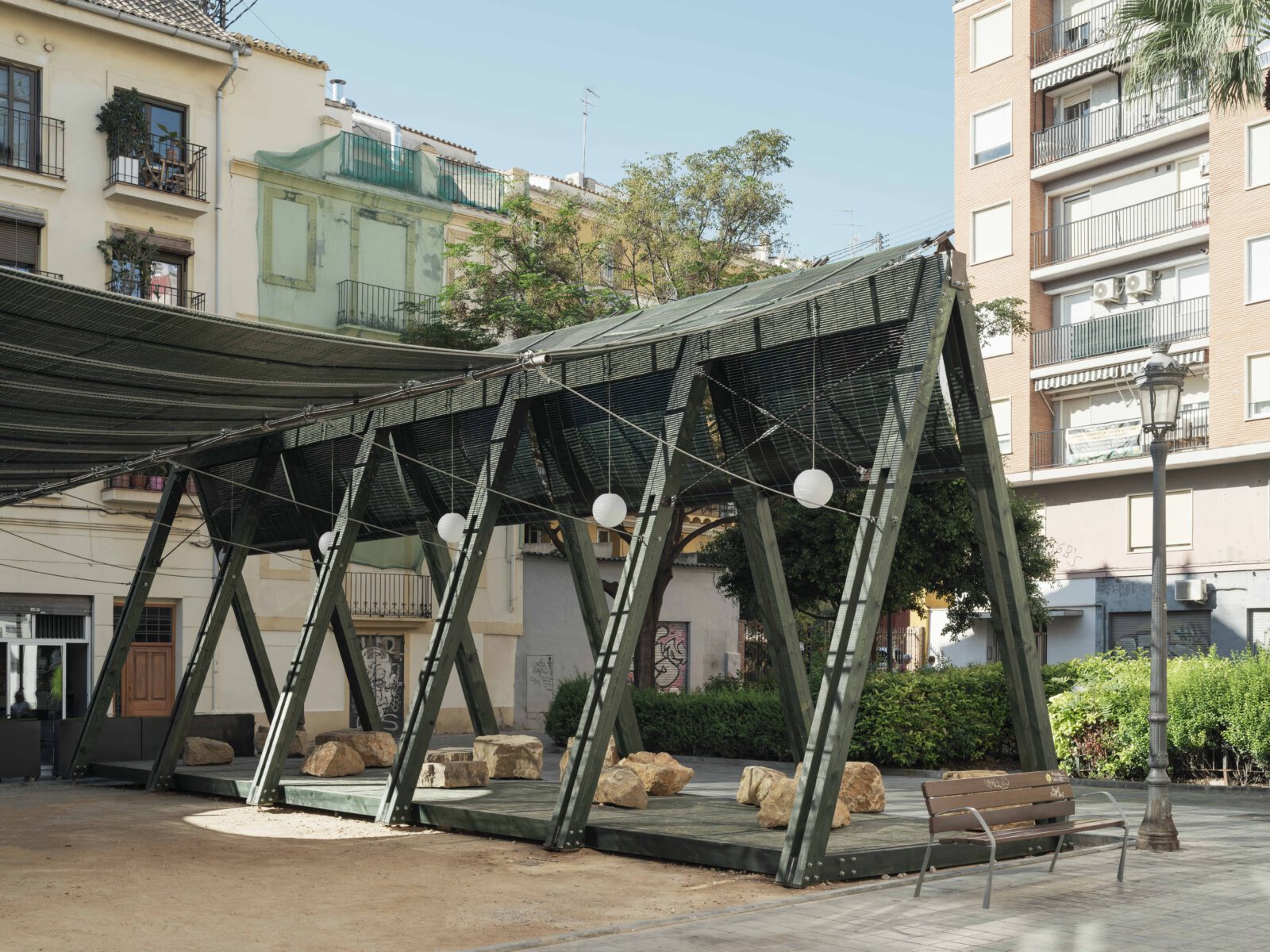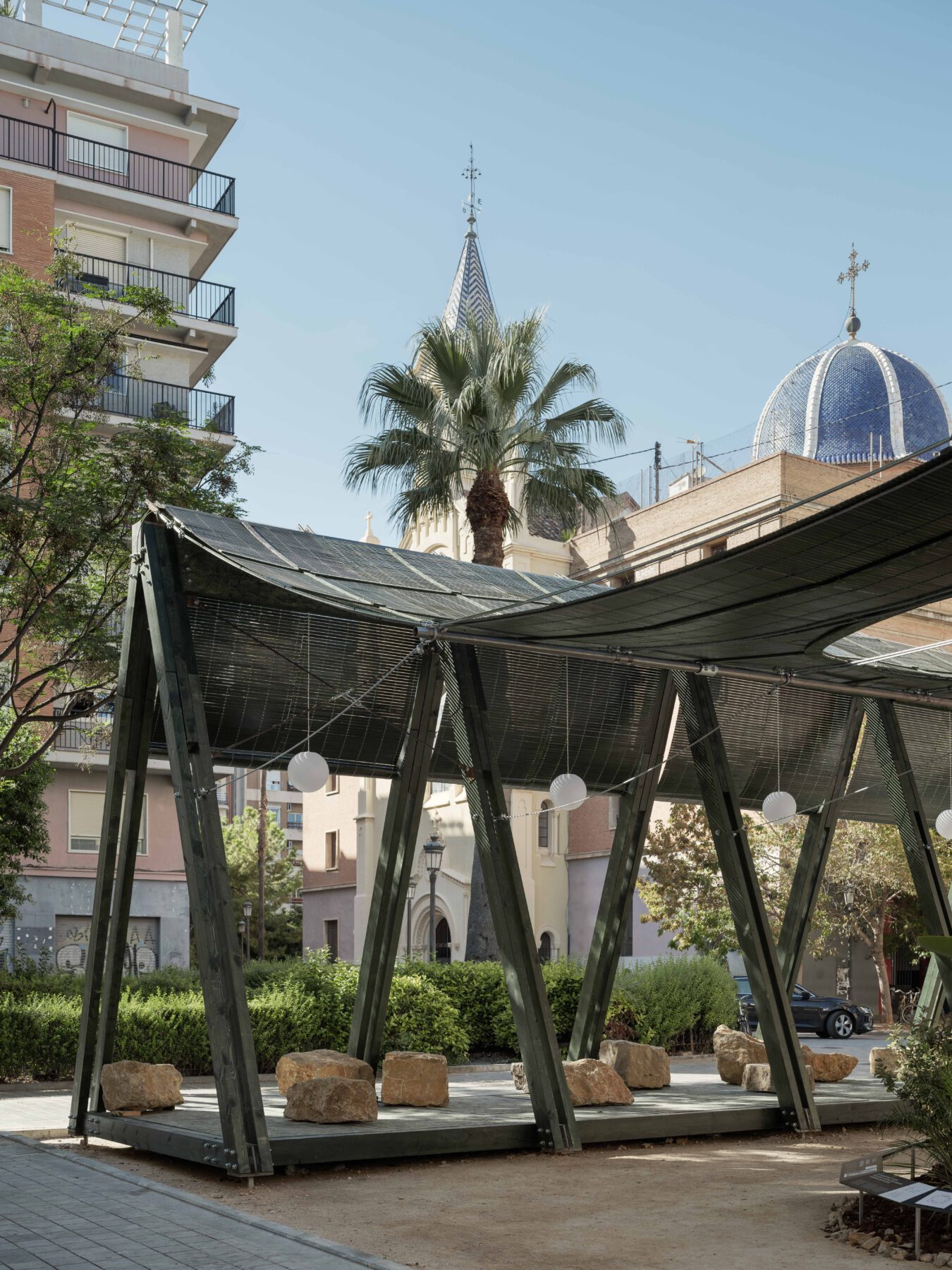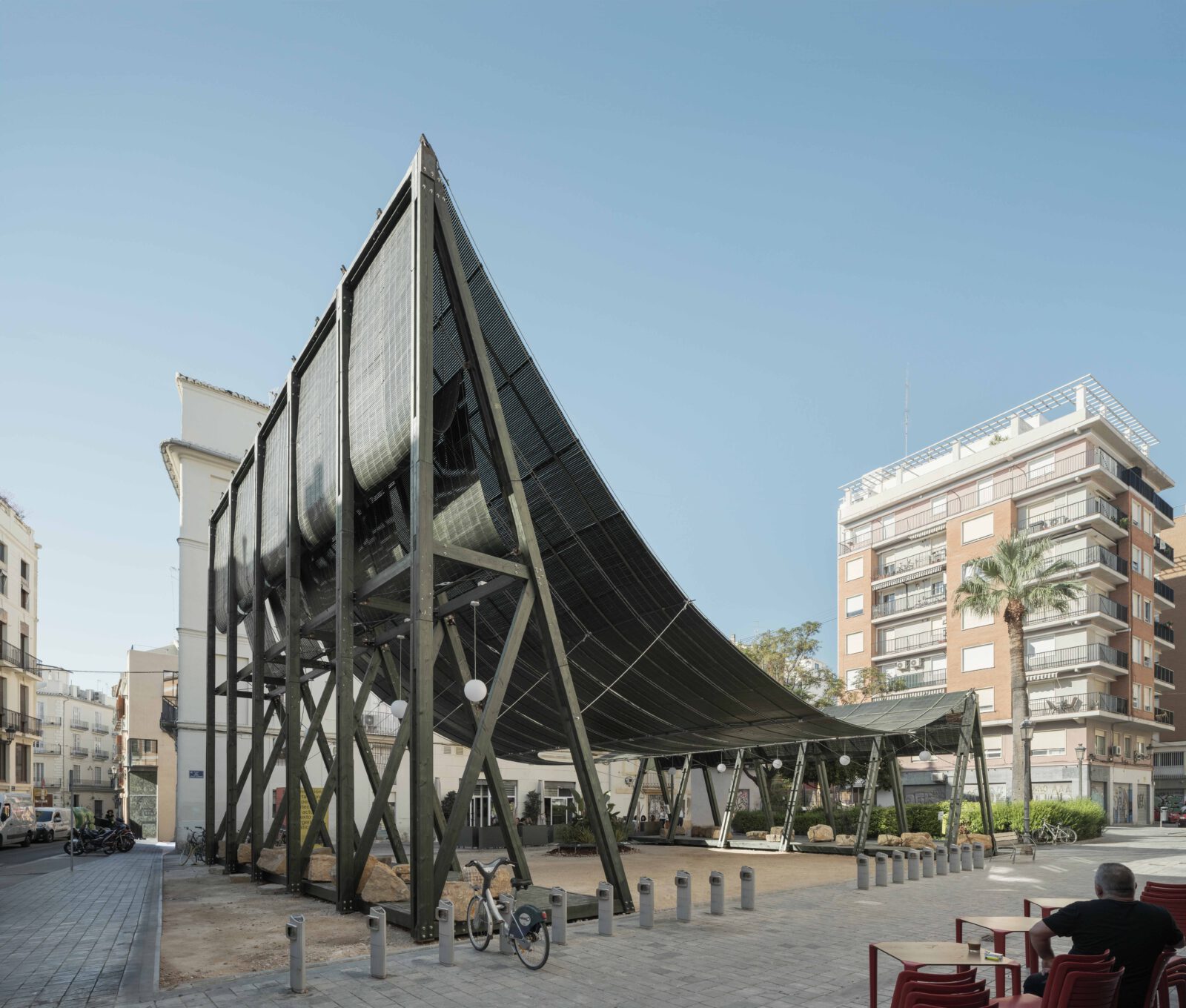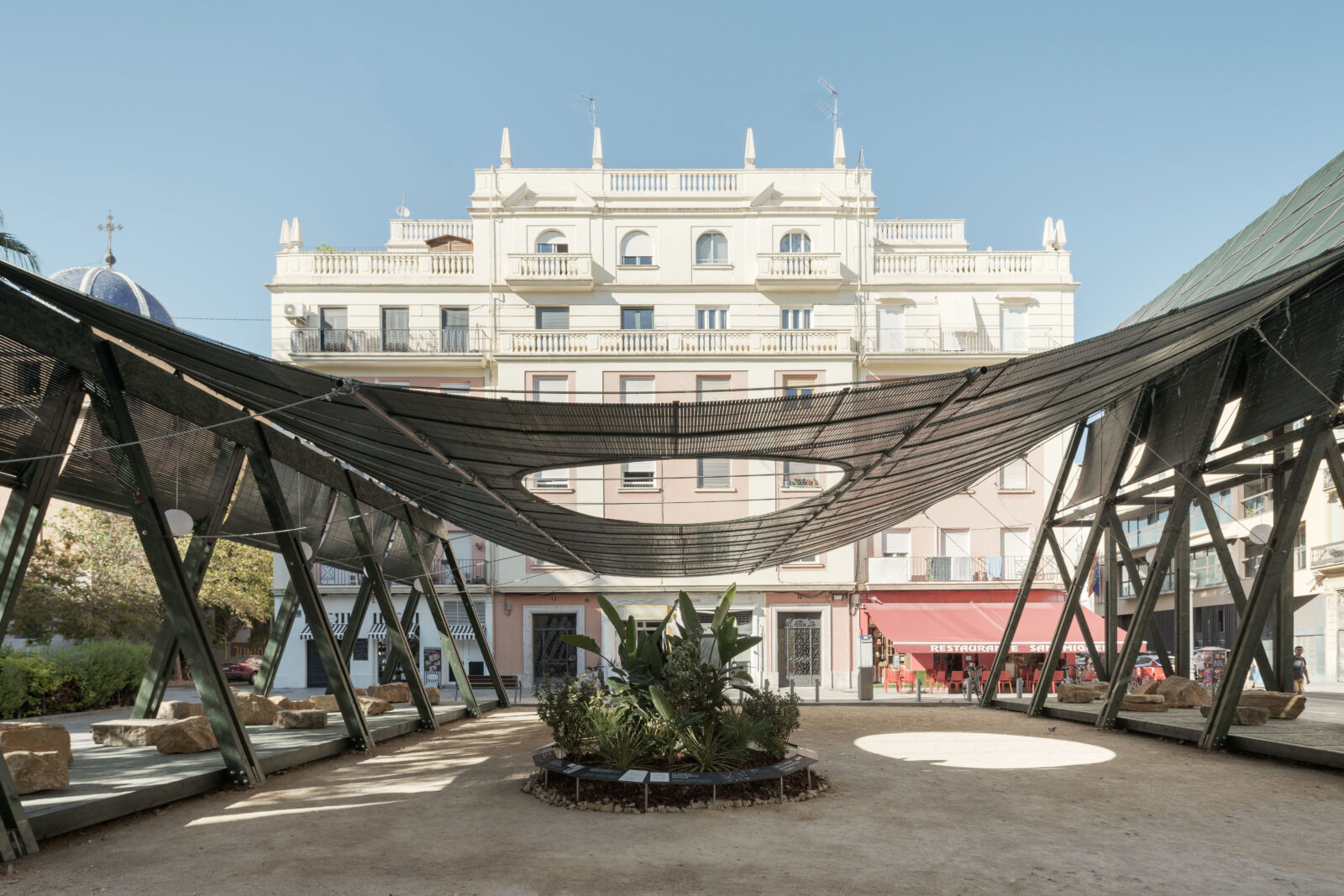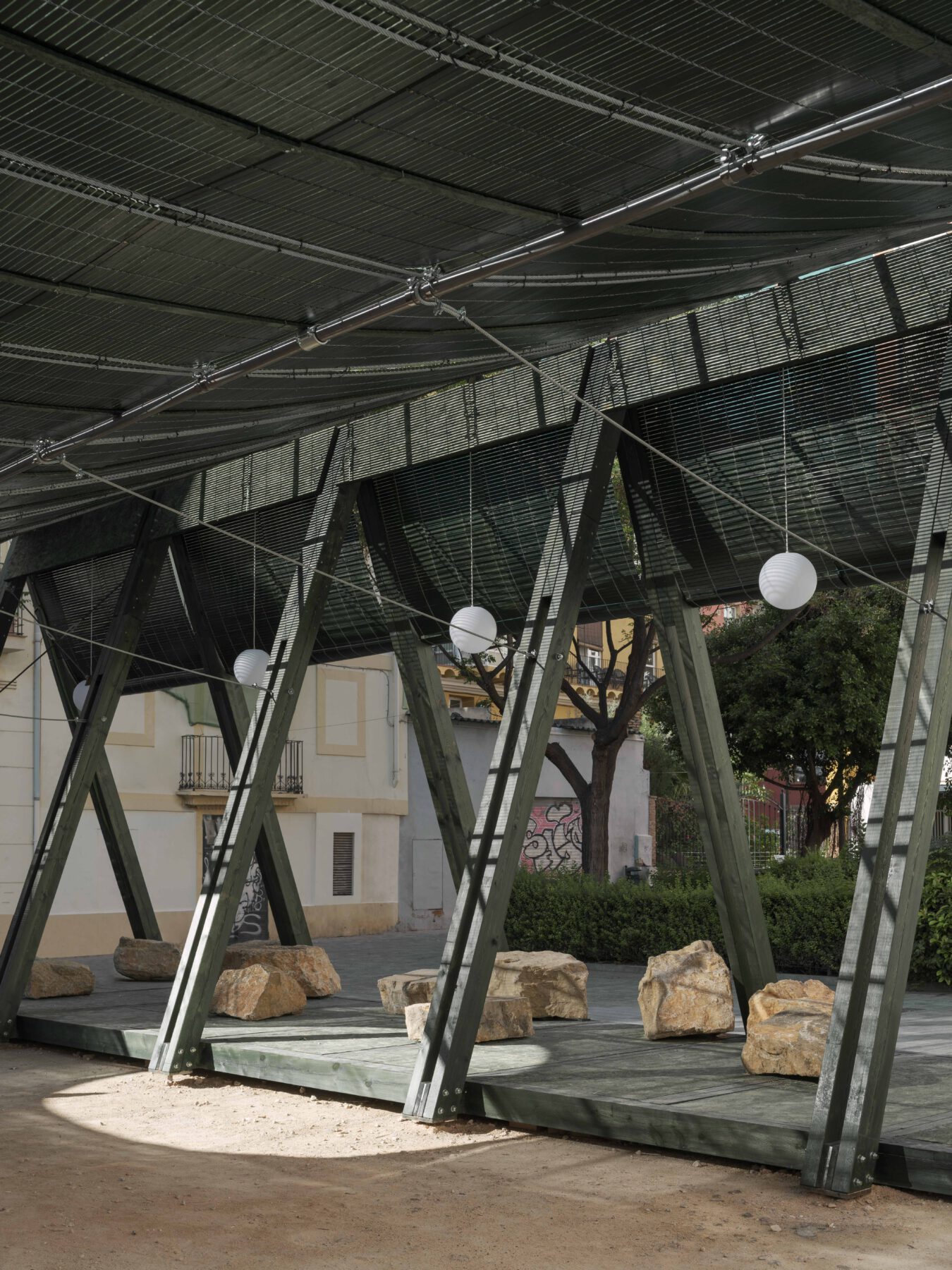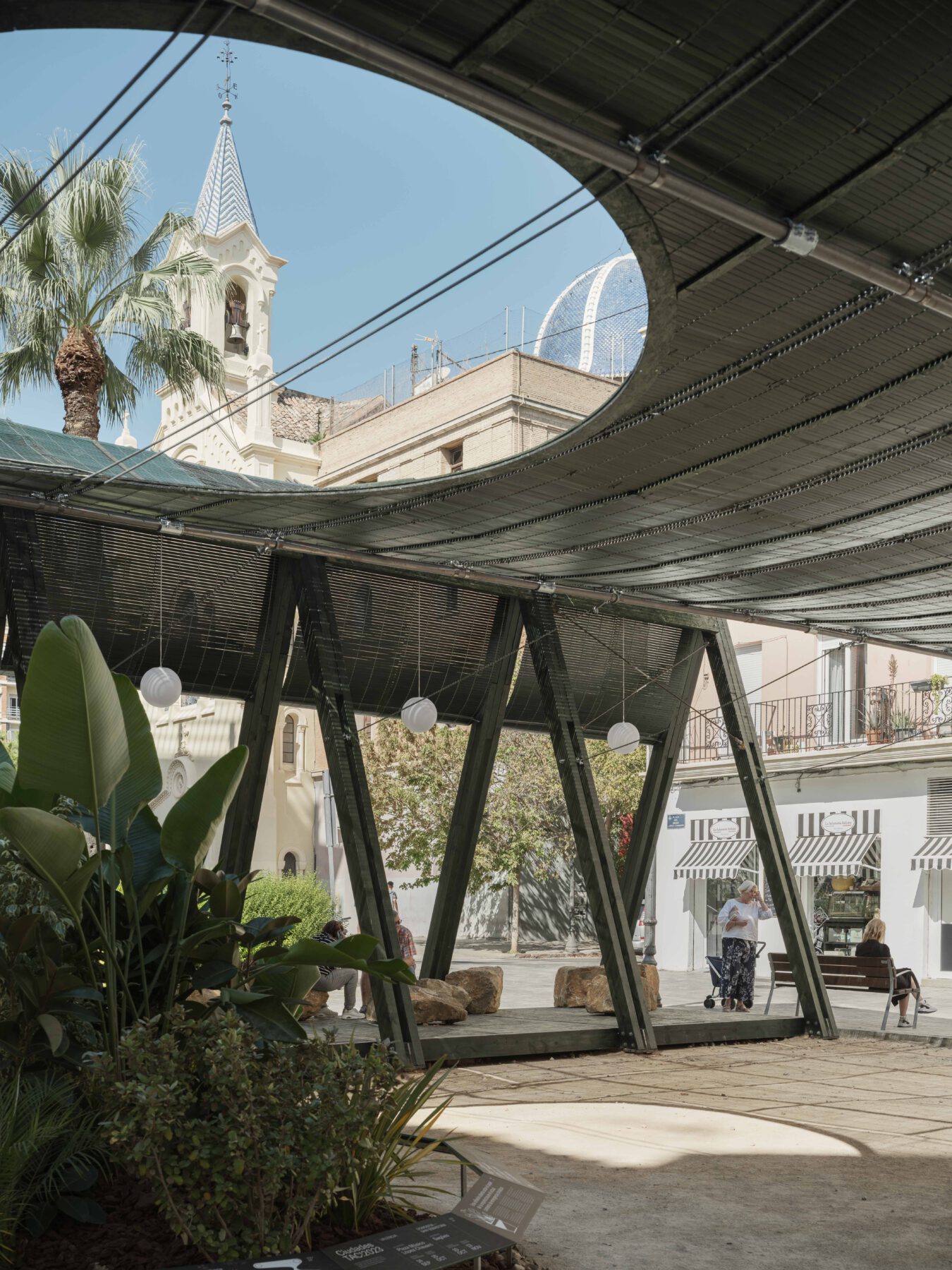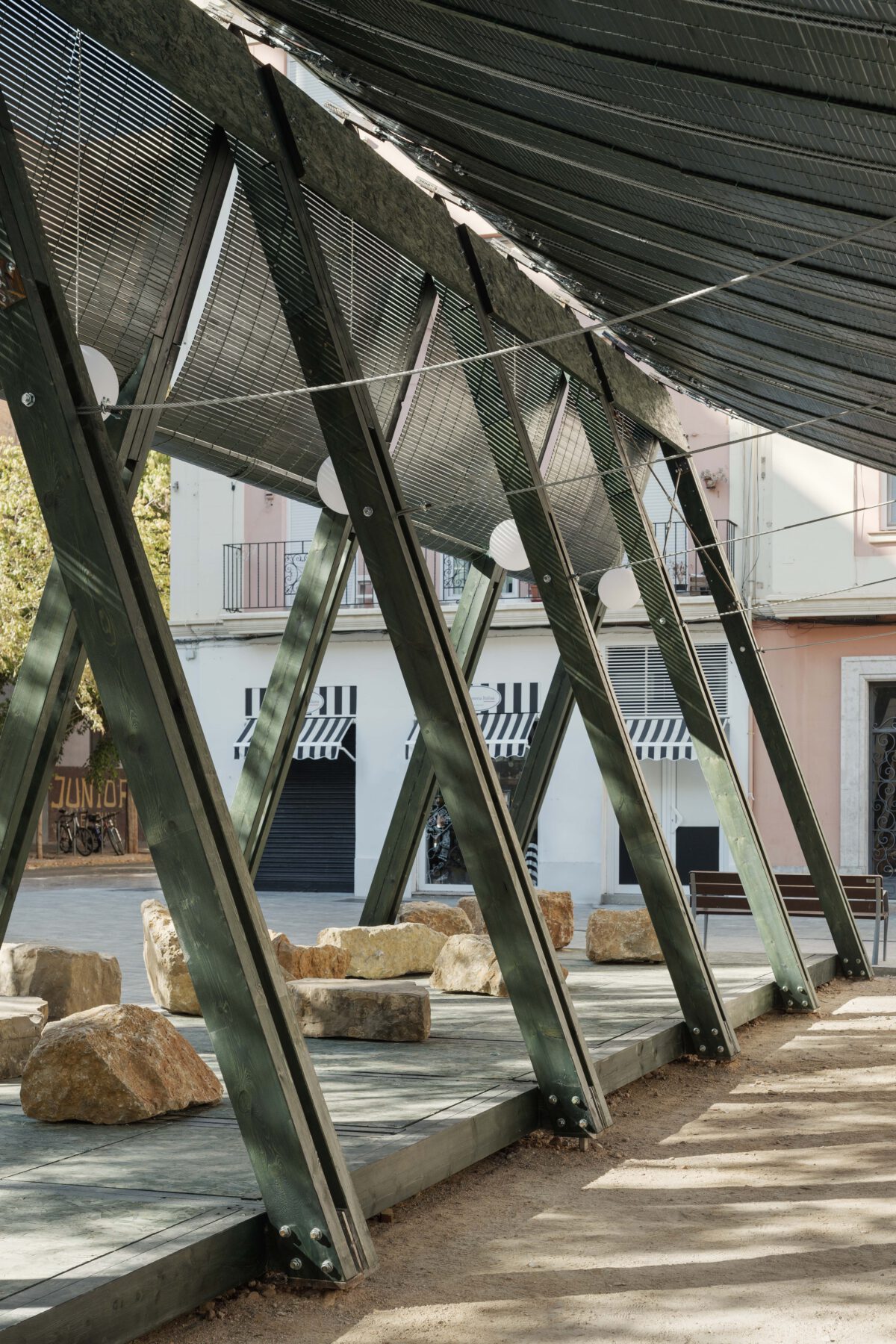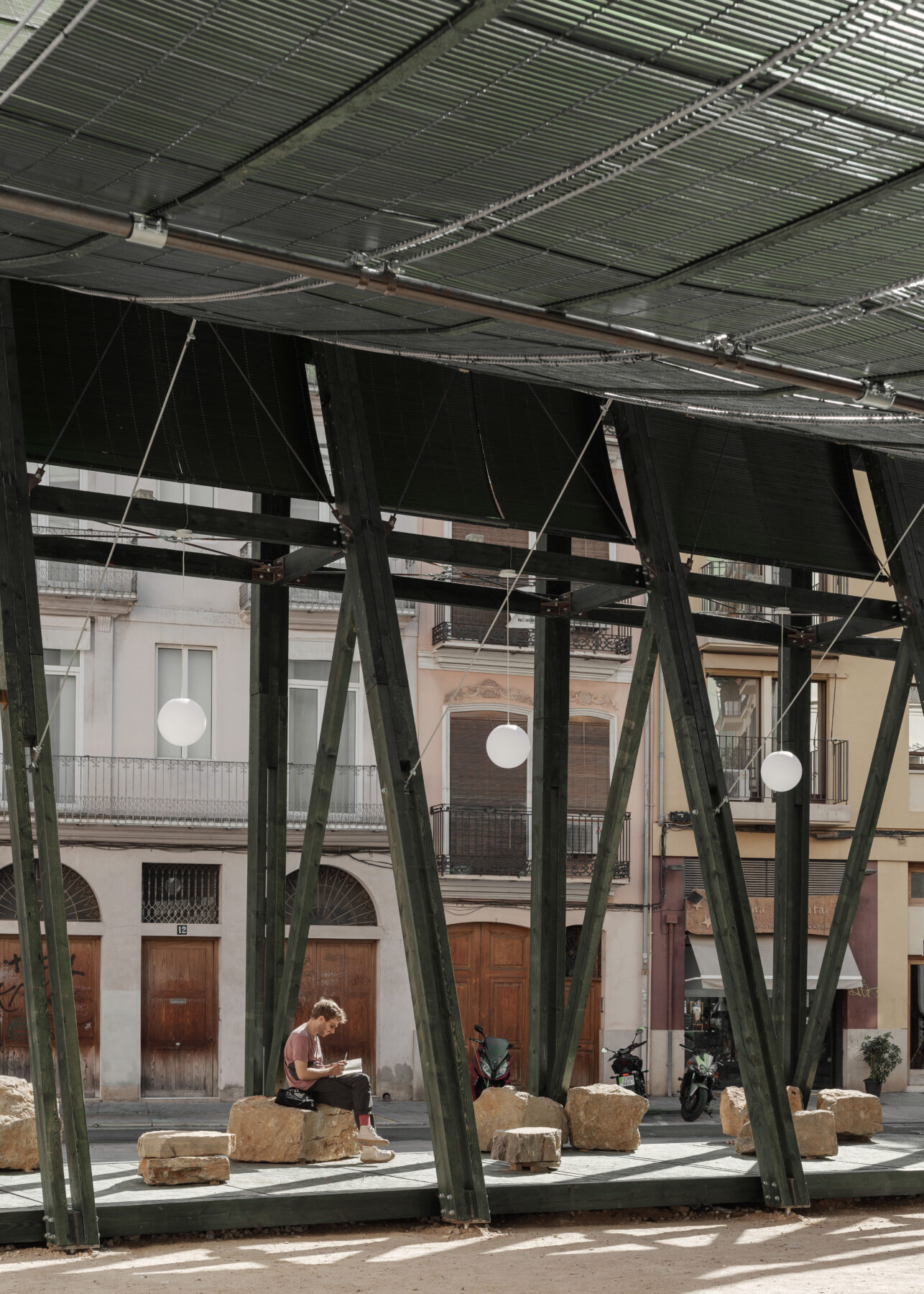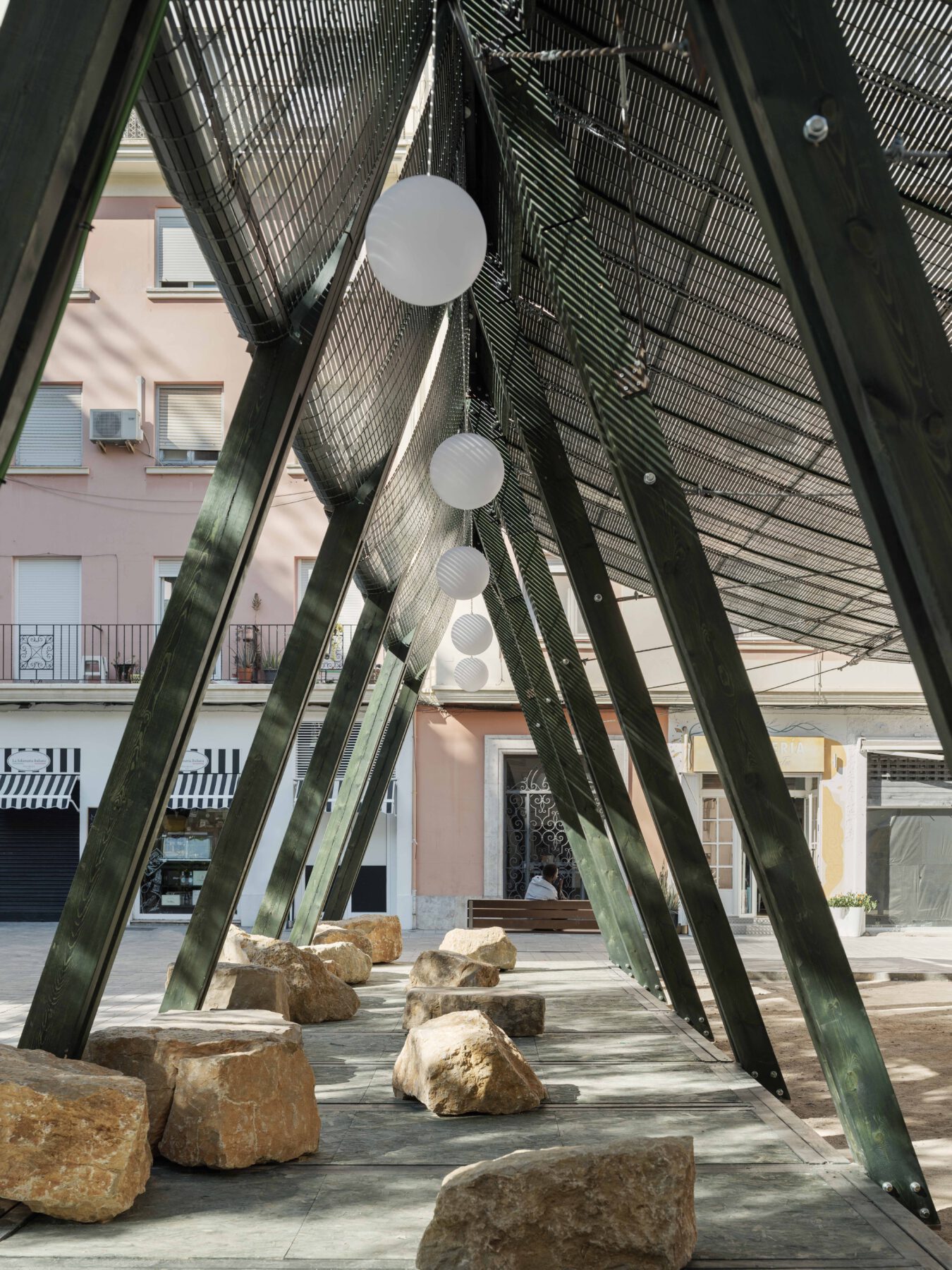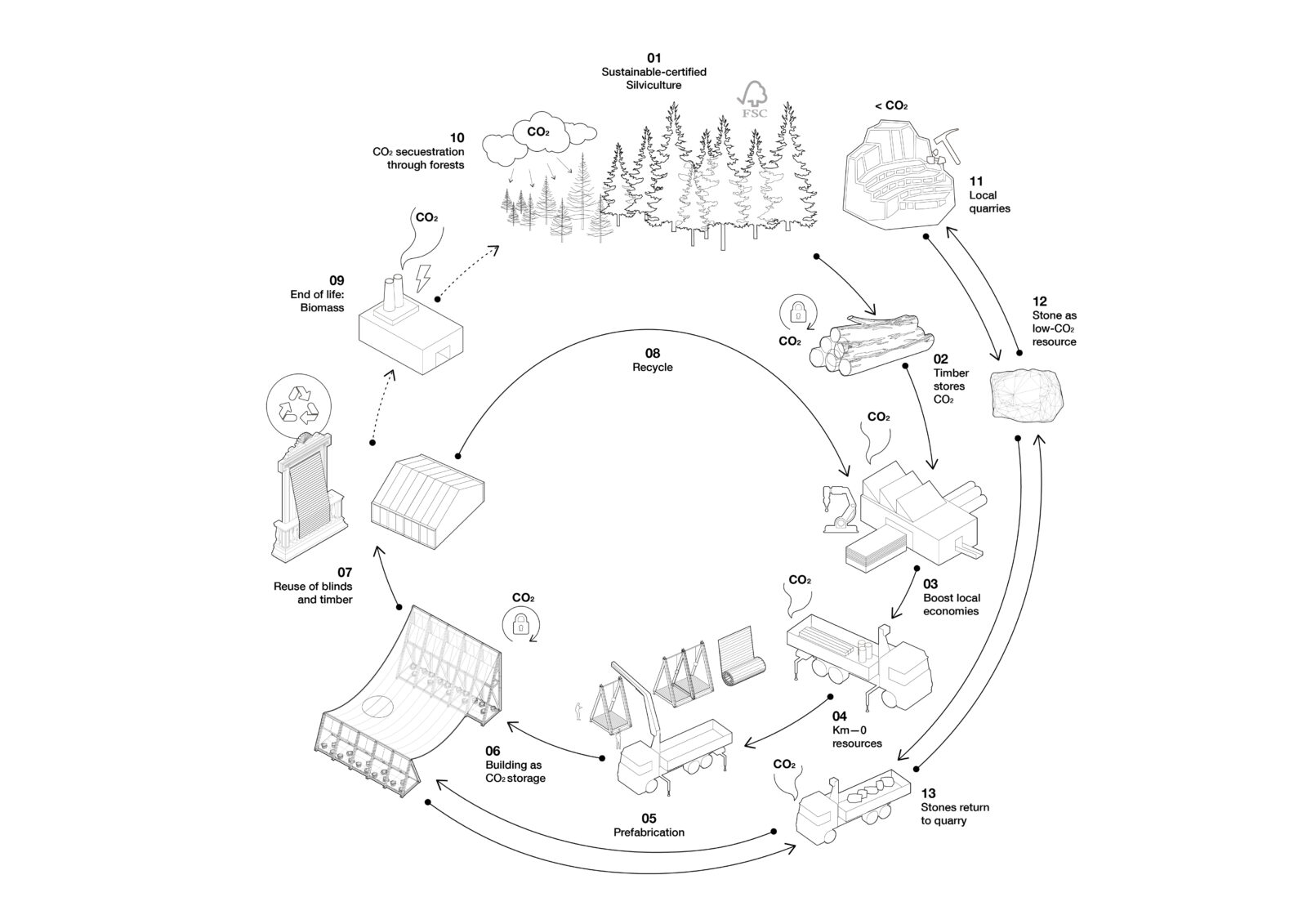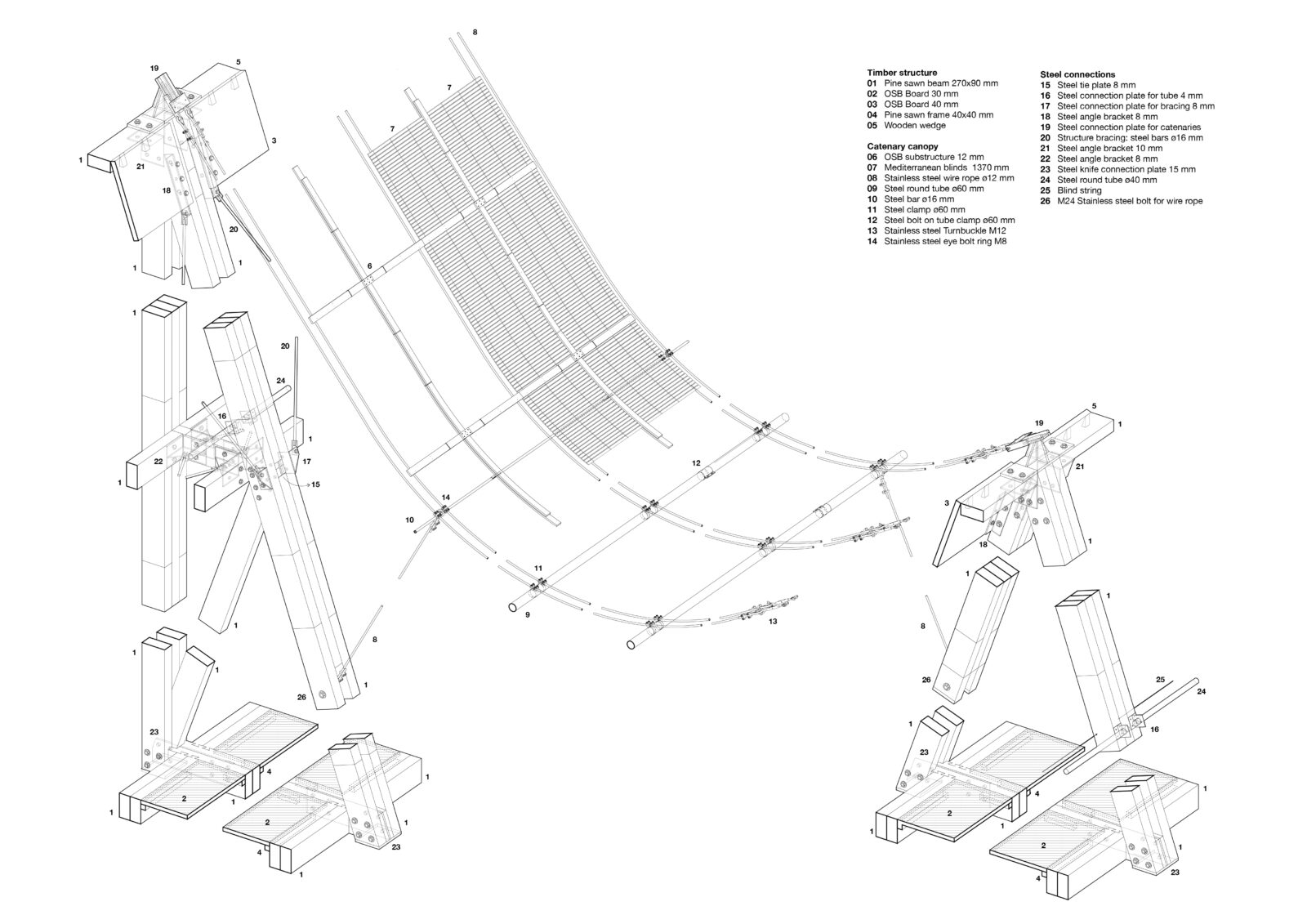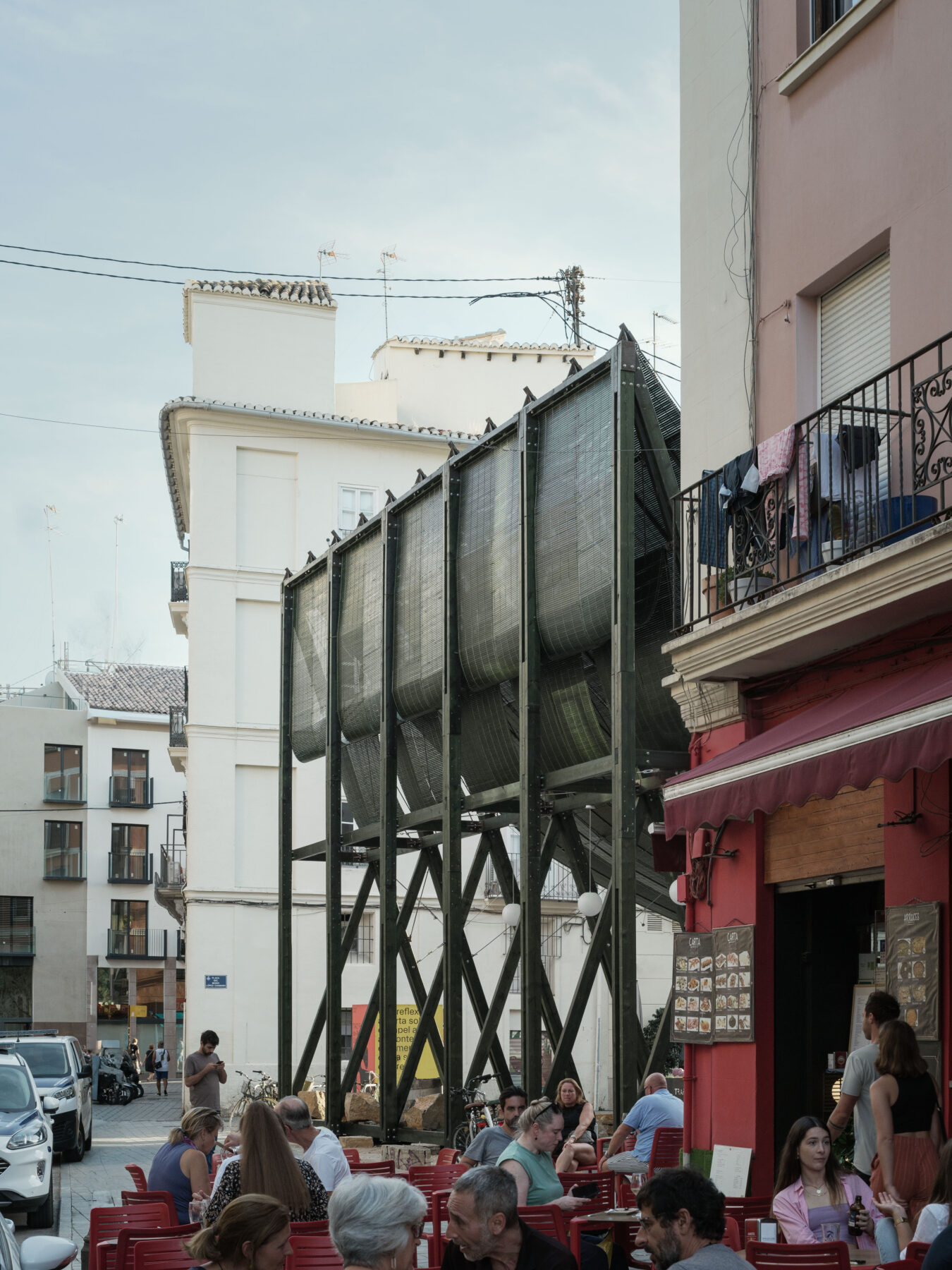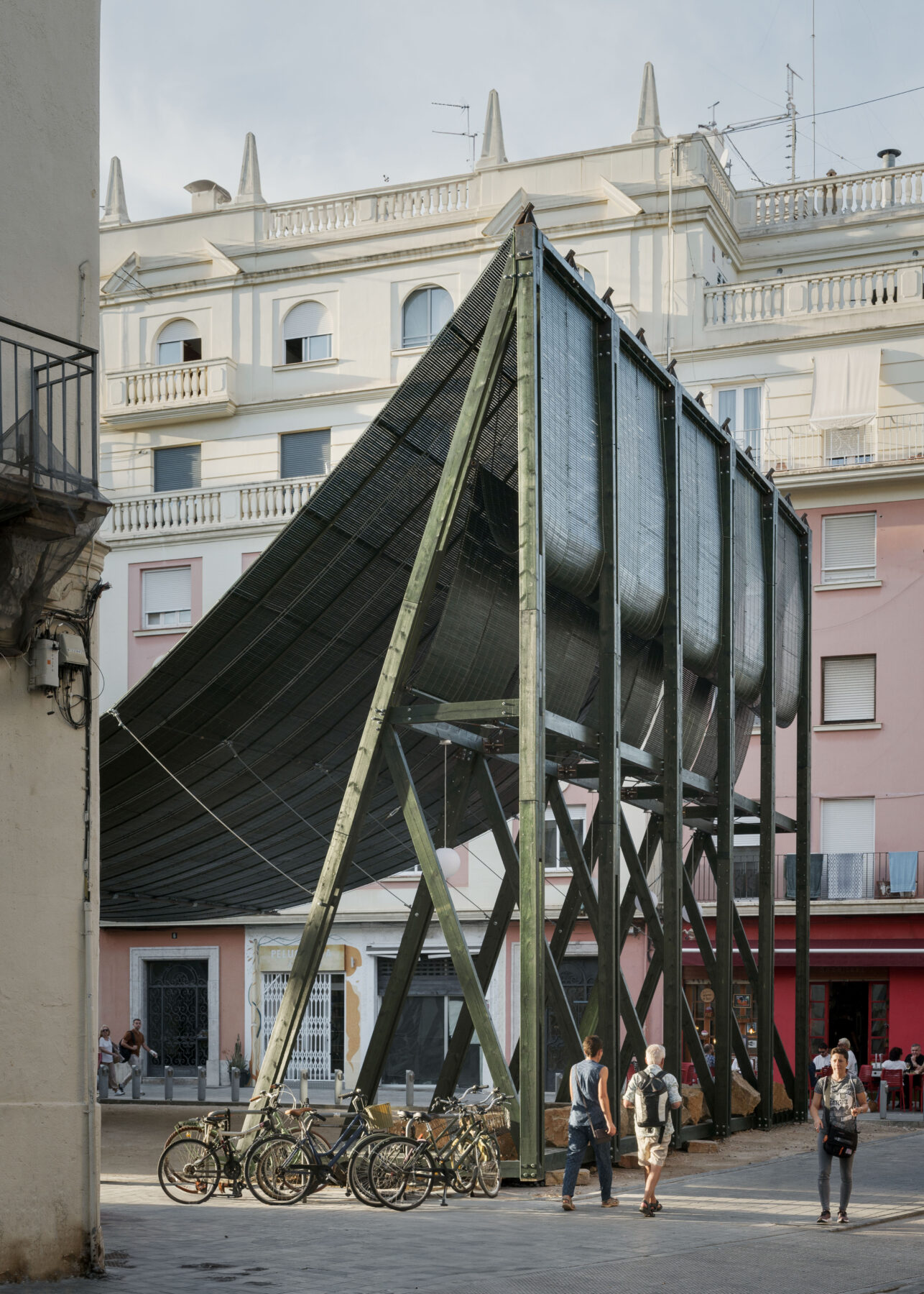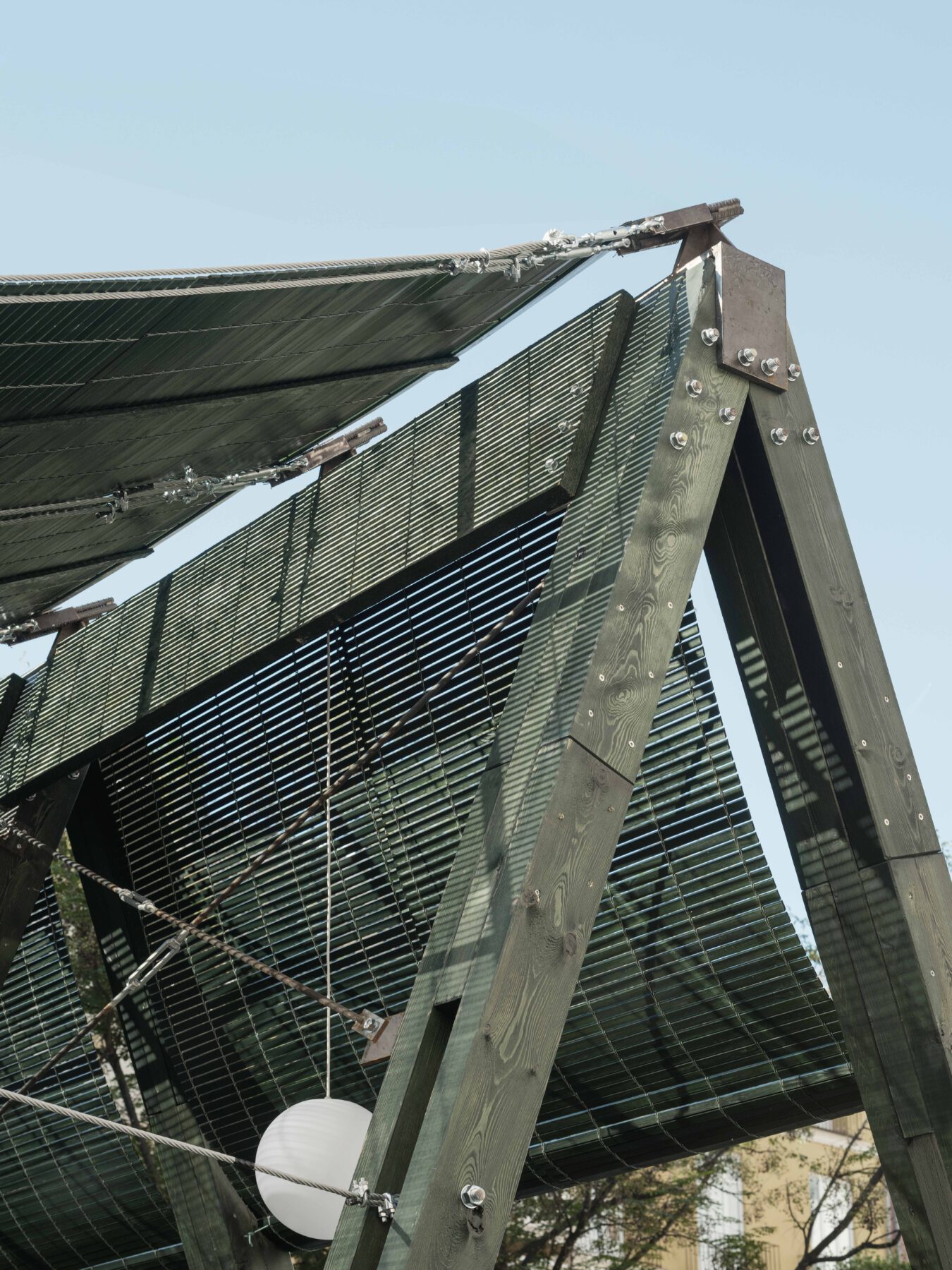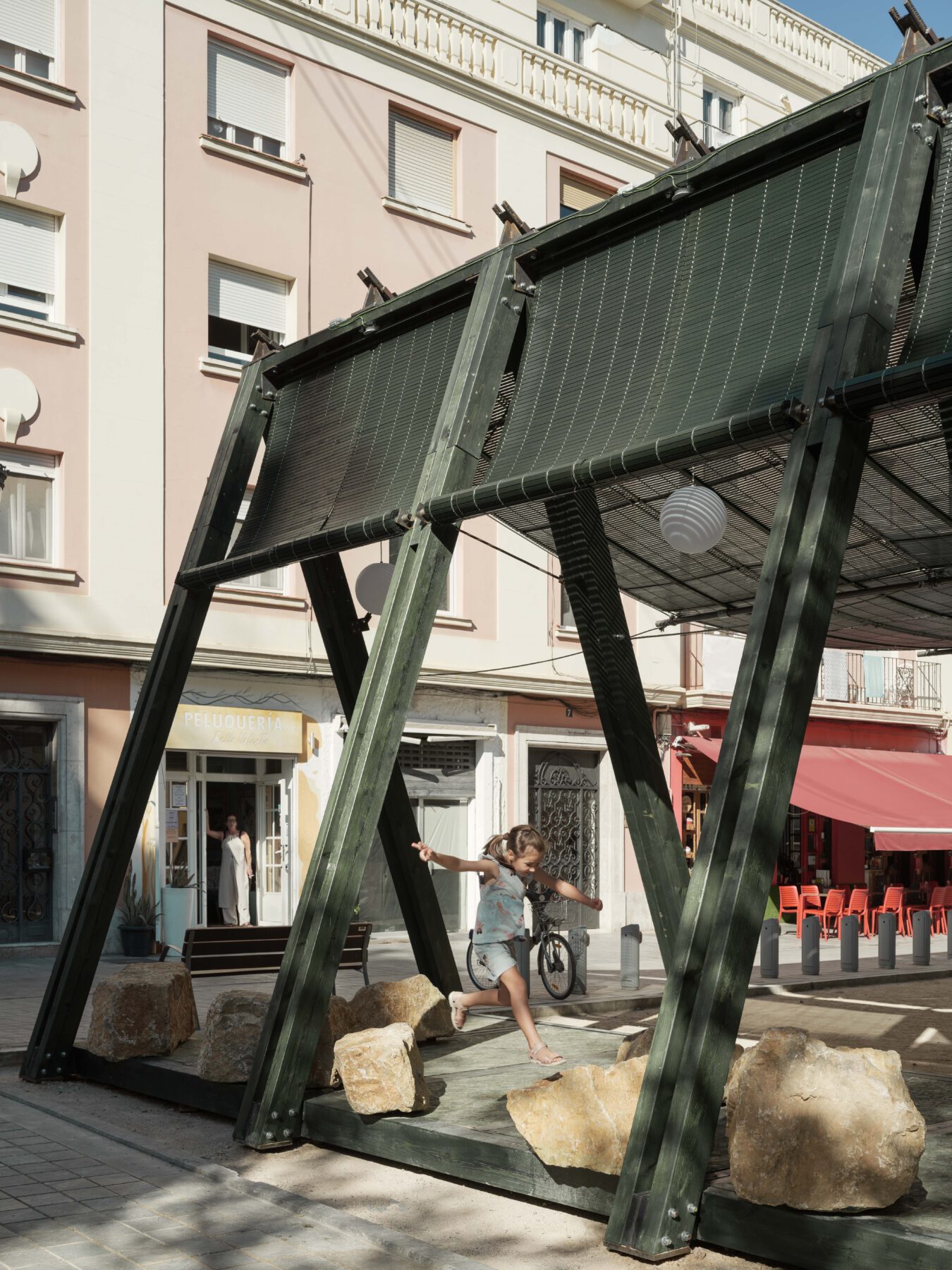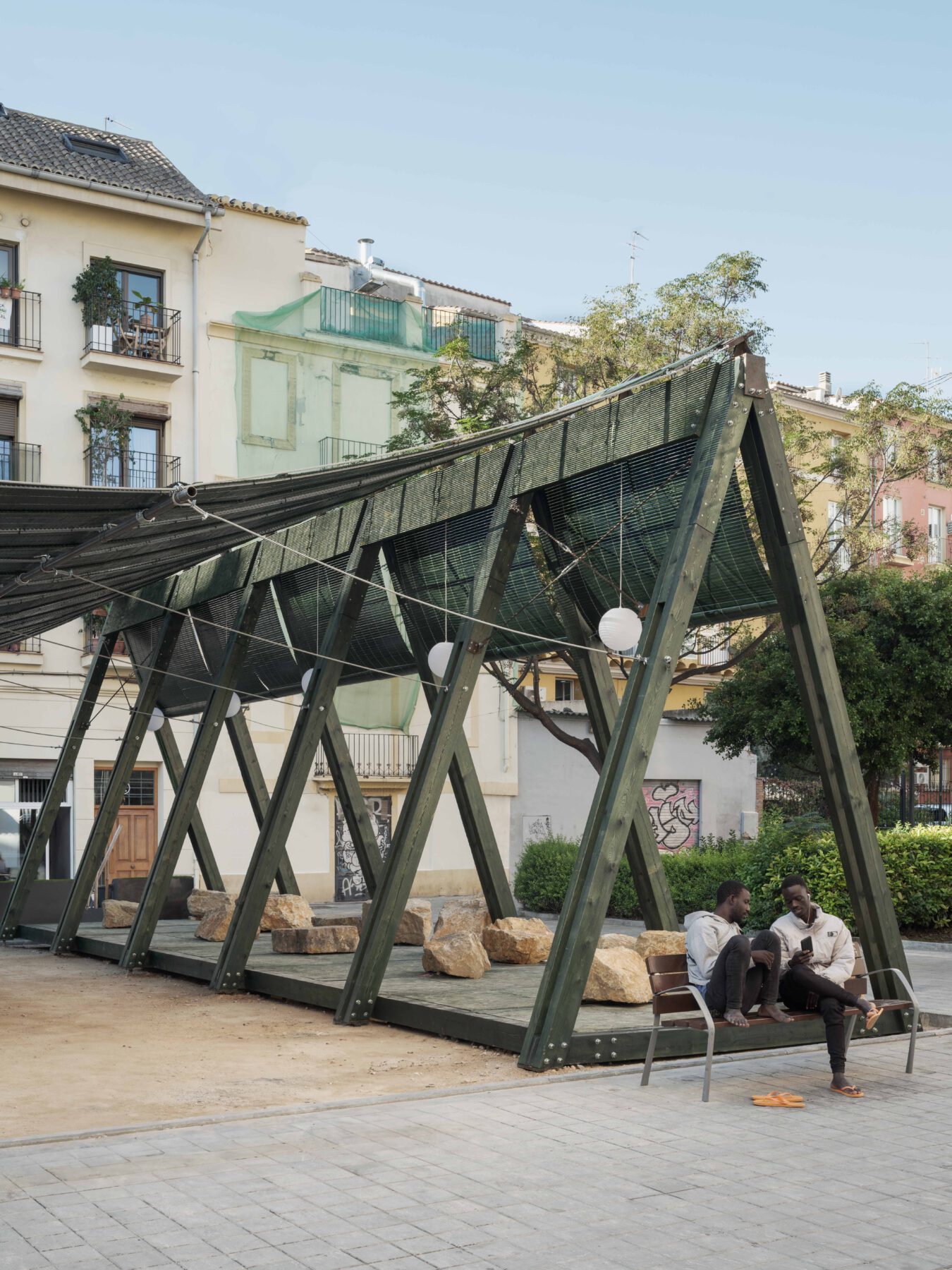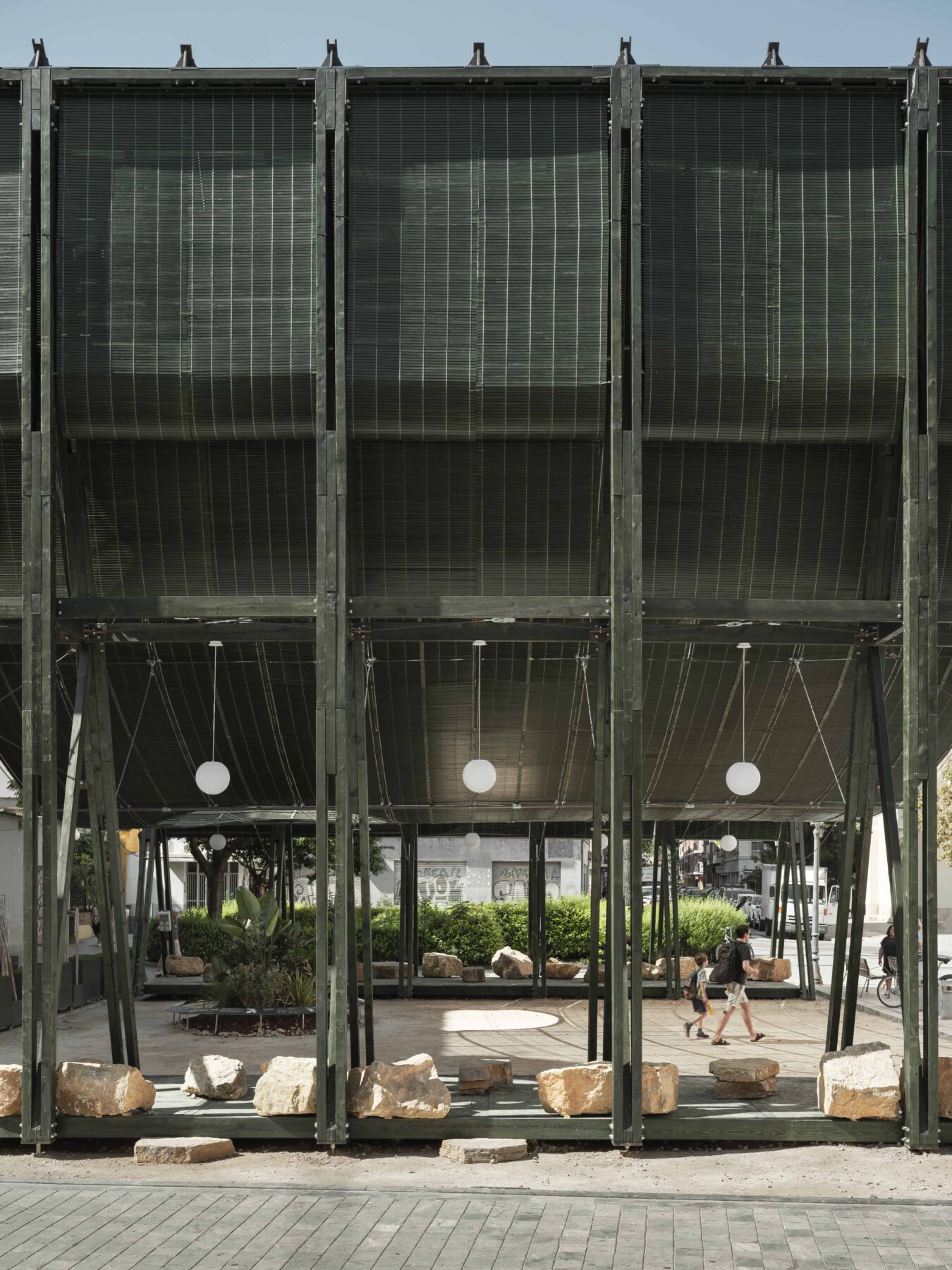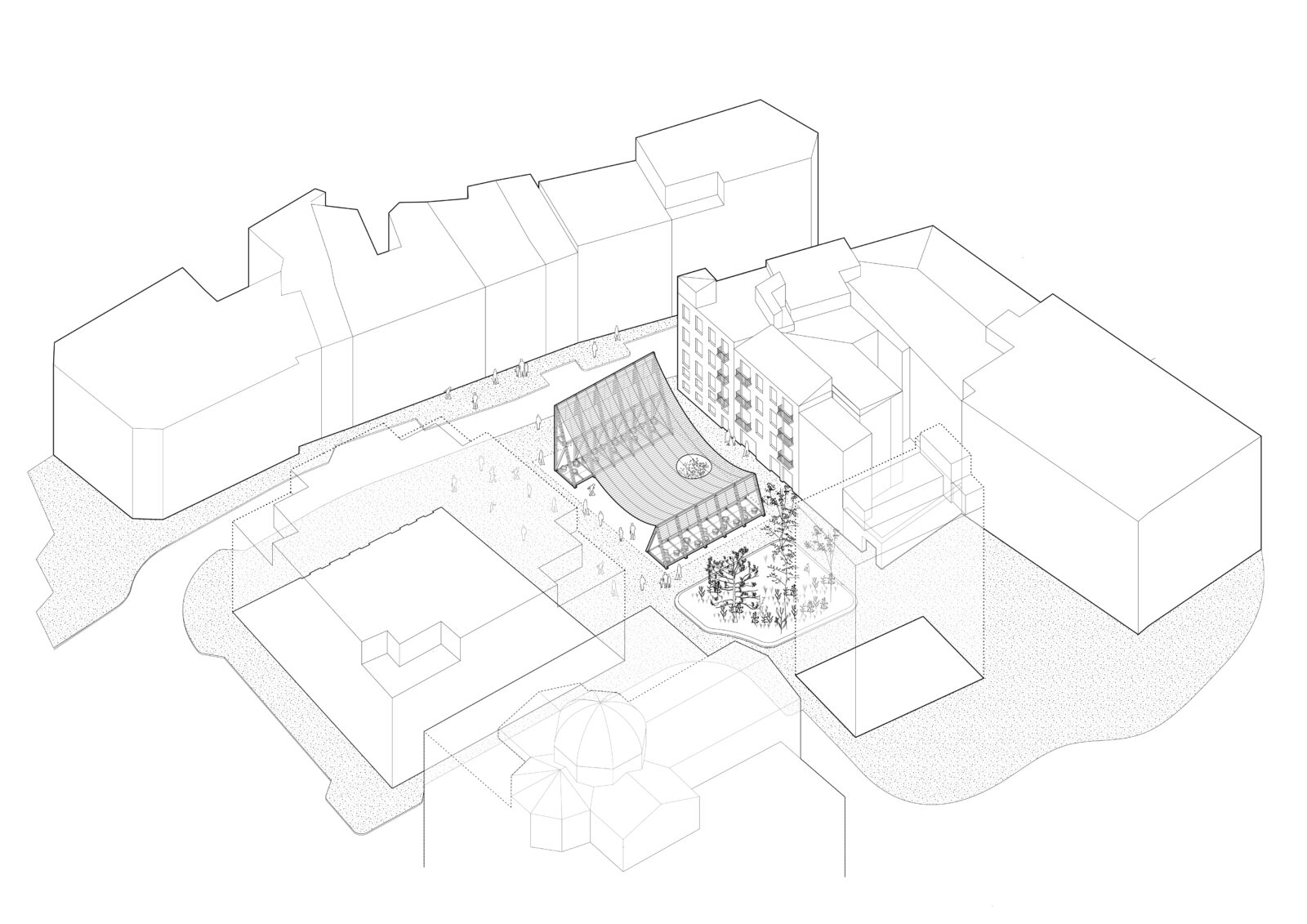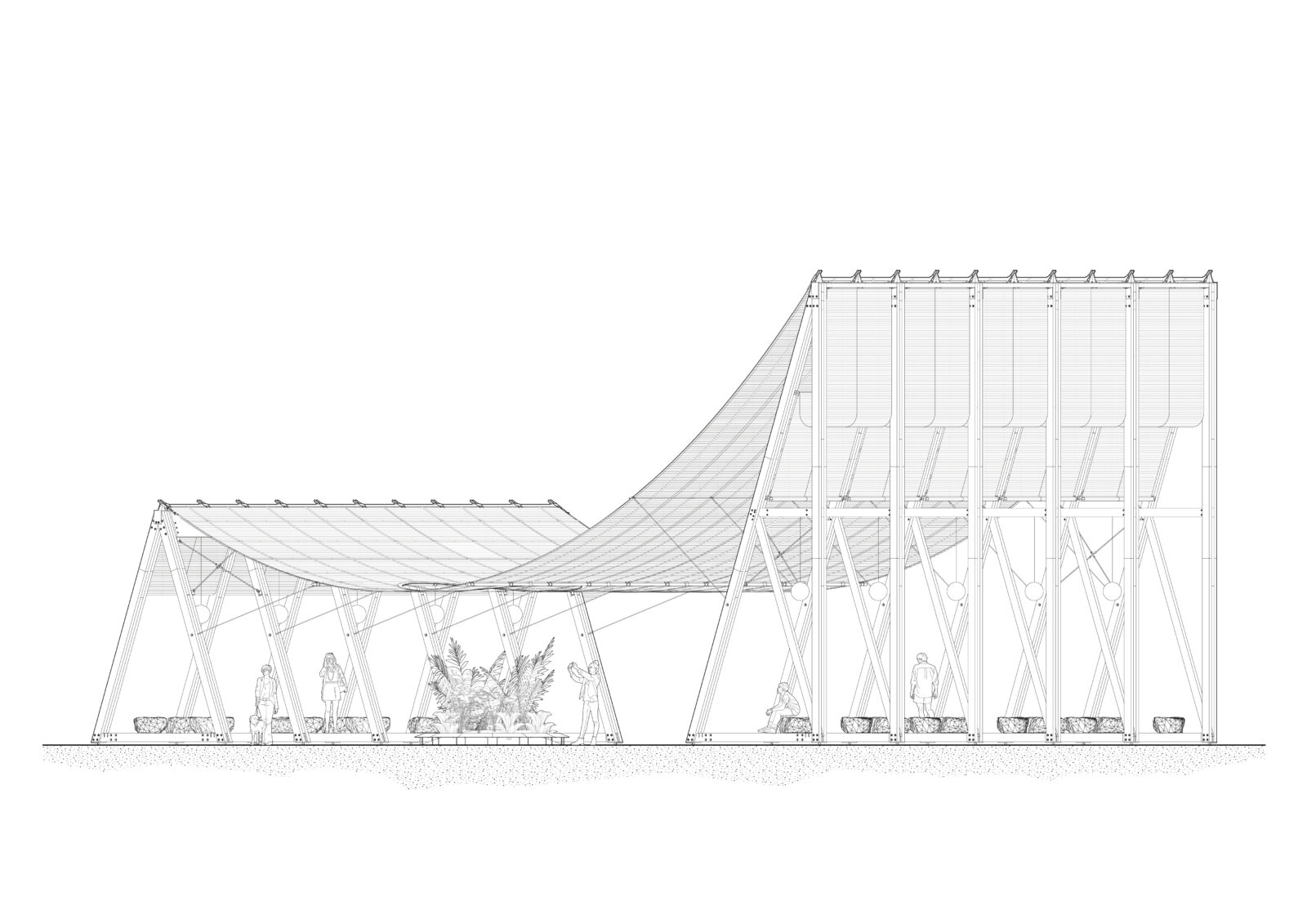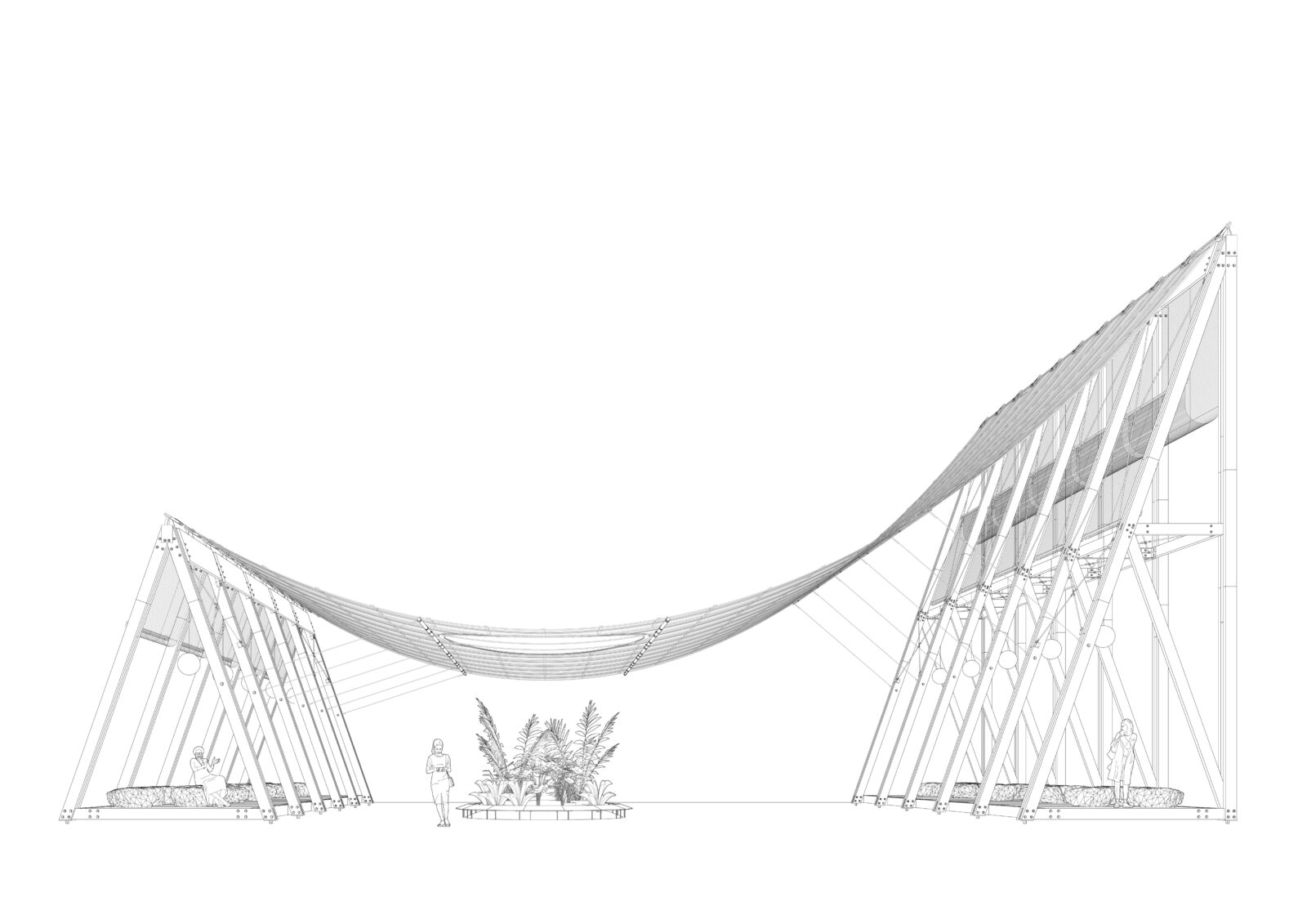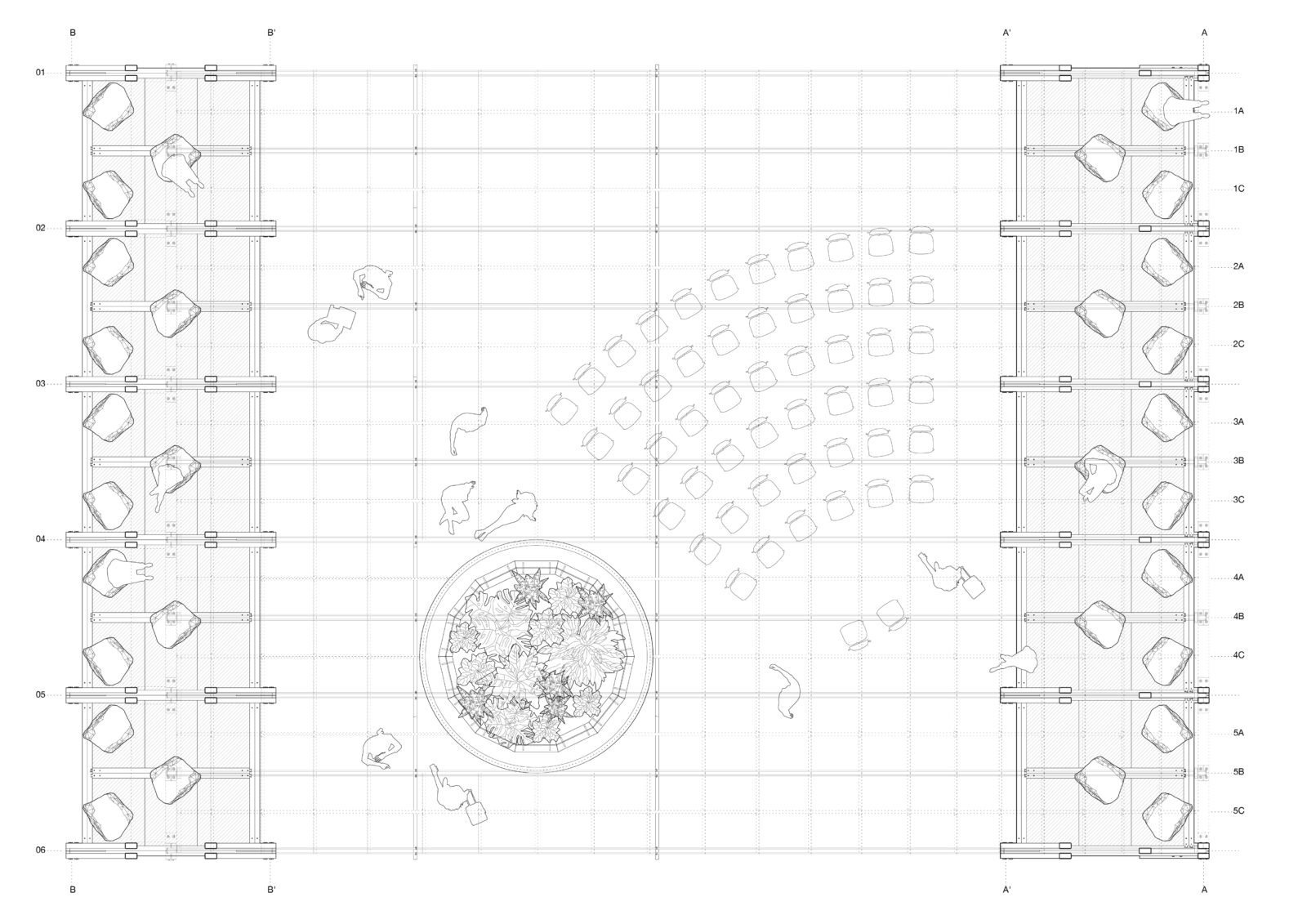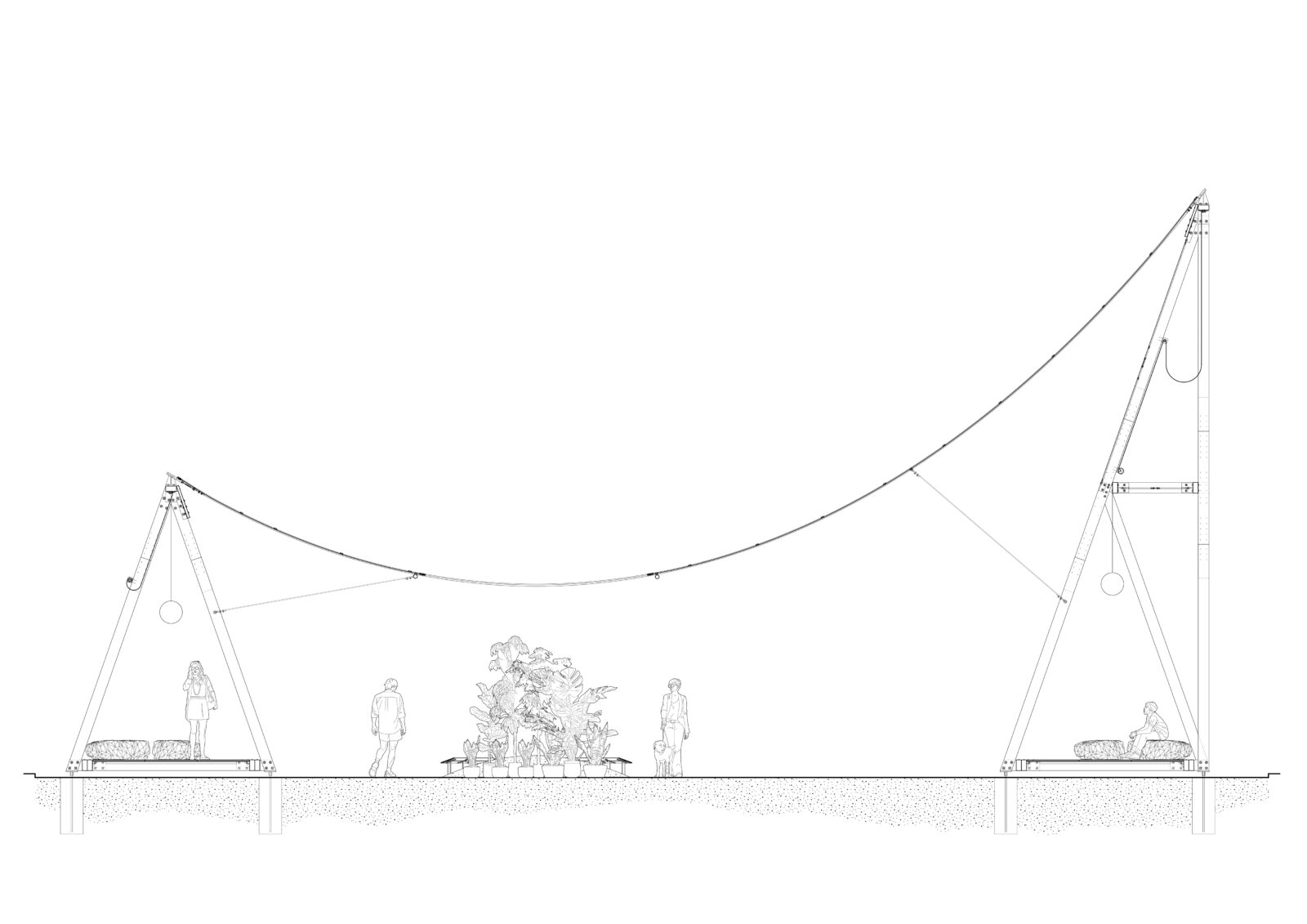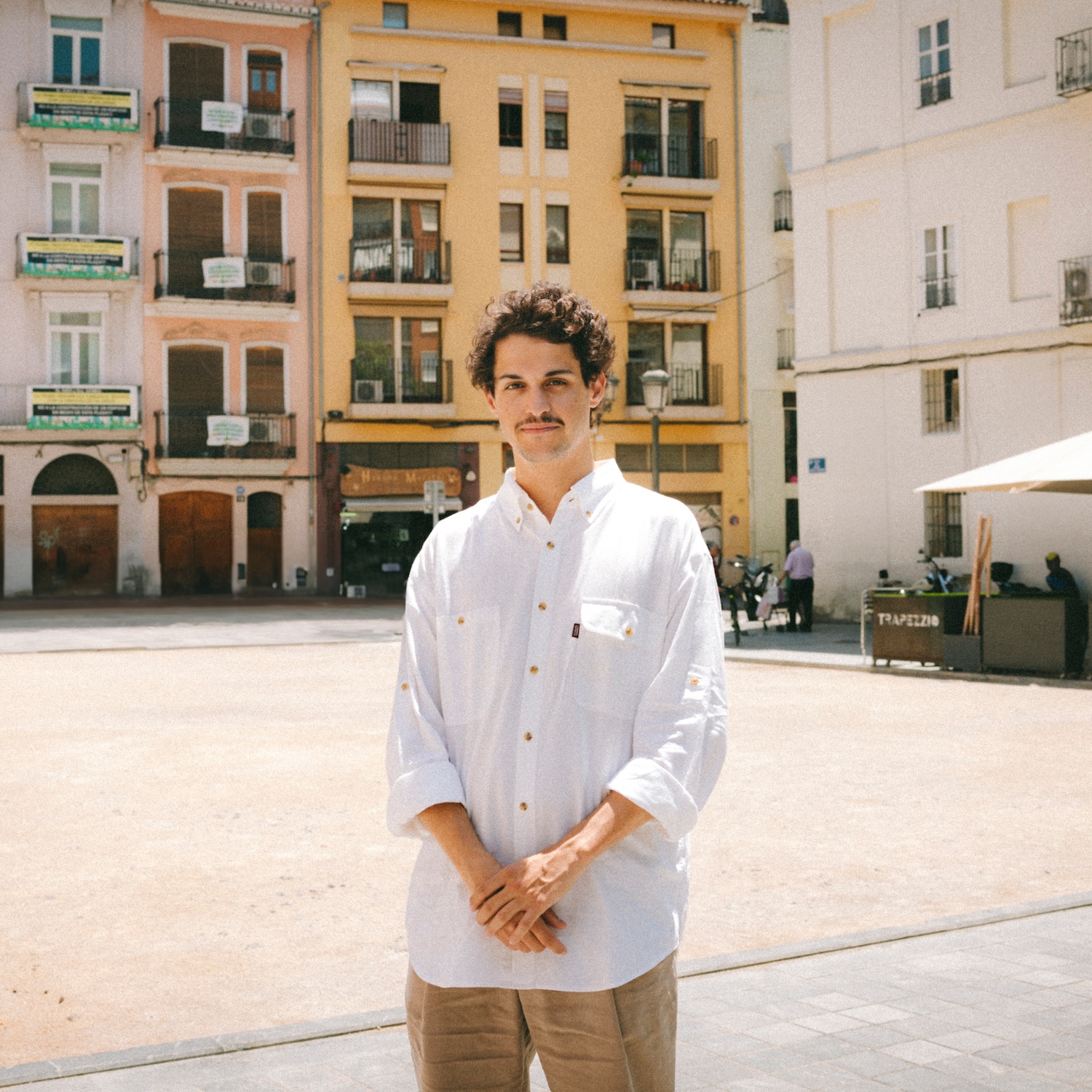‘Mediterráneo,’ is a pavilion designed by Manuel Bouzas for the second edition of TAC! Urban Architecture Festival in Valencia.
‘Mediterráneo’ pavilion pays tribute to the Mediterranean blind.
This mechanism has allowed the adaptation of living spaces to adverse weather conditions by offering an effective, simple, and lightweight solution to combat high temperatures.
The pavilion was conceived as an urban blind that, instead of protecting a window, covers an entire public space.
A collective shadow that, instead of protecting a single individual, brings together a whole community. From September 25 to October 16, multiple activities took place under the shade of this monumental-scale blind, reactivating the public space and bringing it back to life.
The project designed by Manuel Bouzas was chosen as the winning proposal among 125 submitted by young architects this year. TAC! Urban Architecture Festival is an initiative promoted by the General Secretary of Urban Agenda, Housing and Architecture of the Spanish Ministry of Transport, Mobility and Urban Agenda (MITMA) and the Arquia Foundation. Its main goal is to highlight the relevance of young architects in Spain by granting them the opportunity to build a major public work in the form of a temporary pavilion.
A tribute to the Mediterranean blind
The Mediterranean blind is more than just an architectural element; it is a cultural symbol in Spain. It results from a very particular response to a very particular climate. Therefore, it is unsurprising that many cities in southern Europe that share the same climate and often the same coastline have adopted this solution to protect themselves from the high temperatures. This explains why they are known as ‘Alicantina’ blinds in Spain and ‘Venetian’ blinds in Italy. Since the advent of mechanical systems allowing climate control, such as air conditioners and air fans, blinds have become less popular. However, the current climate and energy crisis raises the need to reassess the environmental impact of the spaces we inhabit.
These effects range from the energy consumption of our homes to the emissions resulting from the extraction of building materials.
The pavilion is located in Plaza Músico López Chavarri, in Valencia’s historic El Carmen neighborhood. This square is not a ‘designed’ or ‘planned’ space but the result of the demolition of a previously existing residential building. Perhaps this explains the shortcomings of the site, with the absence of shade, amenities, greenery, or water features. It is a space for transit but not a place to stay. The balconies of the surrounding buildings display placards placed by neighbors calling for an alternative future for this urban space.
The installation comprises two triangular timber porticos with a catenary-shaped wooden blind suspended between them. The dark green color, which characterizes the project, refers to one of the five traditional color blinds usually manufactured in this region. A circular opening in the canopy lit up a small interior garden built using vegetation and soil from the site, which contributed to regulating temperatures during late summer. Meanwhile, a series of rocks acted as a counterweight to the canopy and provided makeshift seats to bring people together. The shade provided by the largest blind in Valencia generated an open-air public space that was the venue for TAC! Festival public program.
The pavilion is primarily built with preindustrial, low-embodied carbon and regenerative materials extracted from nearby sources and assembled by local specialized labor.
The material palette echoes diverse landscapes within a 300 km radius, such as the pine plantations of Soria, the blind factories of Sax (Alicante), and the stone quarries of Teruel. Therefore, the strategy aims to promote local and circular economies in the regions where the project is situated.
The structure is constructed using pre-assembled modules in the workshop, reducing costs, timelines, and risks. After dismantling, the materials were recirculated and donated, leaving a temporary footprint in the city.
The timber returned to the industry, the stones returned to the quarry, and the blinds were donated to the neighbors’ community.
From September 25 to October 16, the pavilion hosted a wide range of free activities organized by Valencia City Council and ‘Las Naves’ social and urban innovation center featuring local creative and social figures. Twenty activities were held on the pavilion to showcase the innovation and excellence of local businesses and citizens, as well as Valencia’s role as a hub for creativity and design.
About TAC! Urban Architecture Festival
TAC! seeks to unite contemporary architecture and young talent by reflecting on urban and social issues. After its first edition held in 2022 in the city of Granada, the 2023 edition is being held in two locations: Valencia and Donostia-San Sebastián, two cities with a great architectural tradition that have welcomed the construction of temporary pavilions in their public spaces: Mediterráneo by Manuel Bouzas, from 25 September to 16 October in Valencia; and Lost Forest by Julia Ruiz-Cabello Subiela and Santiago Del Águila, from 10 October to 13 November in Donostia-San Sebastián.
TAC! is based on two open calls held on an annual basis. The first is a competition for young architects to design a temporary pavilion to host the festival program. Secondly, intending to promote young talent in different parts of Spain, the festival has opened a call for applications from local councils to become TAC! Cities in future editions.
Manuel Bouzas
Manuel Bouzas is a Spanish architect and researcher based in Boston (US) and Galicia (ES). He graduated with distinction in 2018 from ETSAM (UPM). Currently, he is pursuing a Master in Design Studies at Harvard University GSD. His practice explores the intersection of architecture and ecology through multiple scales and mediums, ranging from ephemeral installations to design research. His projects were exhibited at the Venice Architecture Biennale in 2023 and 2018, and at the Spanish Architecture & Urbanism Biennial in 2021. He received the Renzo Piano World Tour Award 2022, the La Caixa Fellowship 2021, and the COAM Emerging Award 2020.
Facts & Credits
Project title Mediterráneo Pavilion
Typology Landscape
Location Plaza Músico López Chavarri, Valencia, Spain
Date 2023
Area 280 sqm
Architecture Manuel Bouzas
Festival TAC! Festival
Organizers MITMA Spanish Government, Arquia Foundation, Valencia City Council, Las Naves
Structural Design Juan F. De la Torre
Contractor SIDO Madera
Photography Luis Diaz Diaz
Text provided by the architect
You can also check another project by Manuel Bouzas here
READ ALSO: Arrangement of public space Via Cademario in Bioggio | by enrico sassi architetto
